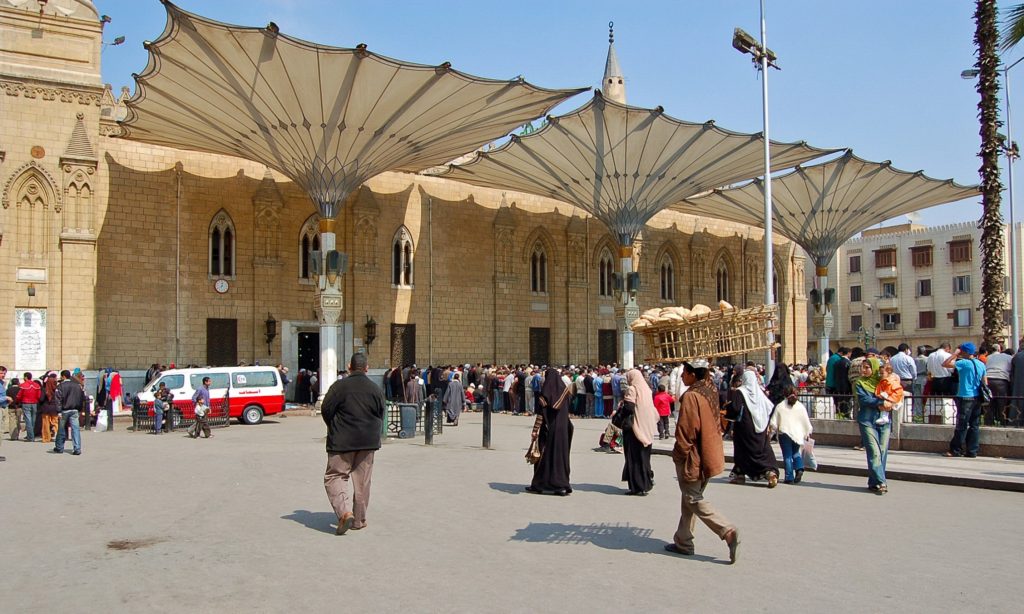
Cairo’s Al-Hussein Mosque is one of Egypt’s holiest Islamic sites and a popular destination for Cairo visitors. Although the mosque is operated by Sunni Muslims, it is famous for holding the head of a hero of the Shi’ites, a rival Islamic sect.
Ali ibn Abi Talib was a cousin and son-in-law of Muhammad, considered a prophet by all Muslims. Shi’ite Muslims consider Ali and his descendants the only legitimate successors of Muhammed. When Ali’s son, Al-Hussein, was killed in 680 A.D. in a battle with rival Sunni forces, his head was separated from his body. Exactly where his head ended up is not clear, but one story says it was buried in Ashkelon, a city along the Mediterranean coast of what is now Israel. According to this story, in 1153, Shi’ite Muslims, fearing that the Christian Crusaders would desecrate the resting place of Al-Hussein’s head, dug it up and sent it by boat to Cairo, where Sunni Muslims interred the head in a mausoleum near Cairo’s famous Khan El-Khalili bazaar. Minarets were then added to the mausoleum to create a mosque.
In 1874, the Muslim ruler of Egypt ordered construction of a new mosque on the site of the mausoleum said to contain the head of Al-Hussein. The mosque was constructed in an Italian Gothic style, popular at the time. More recently, the mosque added three steel and Teflon umbrellas in front of the mosque. Opened electronically, the umbrellas shield from the sun and rain worshippers unable to get into the mosque itself. Every Friday, shop owners in the nearby bazaar close their shops and rush to the Al-Hussein mosque to participate in prayers. Unlike most mosques in Cairo, the Al-Hussein mosque is closed to non-Muslims. However, in an unusual spirit of ecumenism, Shi’ite Muslims often worship in the Al-Hussein Mosque along with the Sunnis.
Comments are closed.